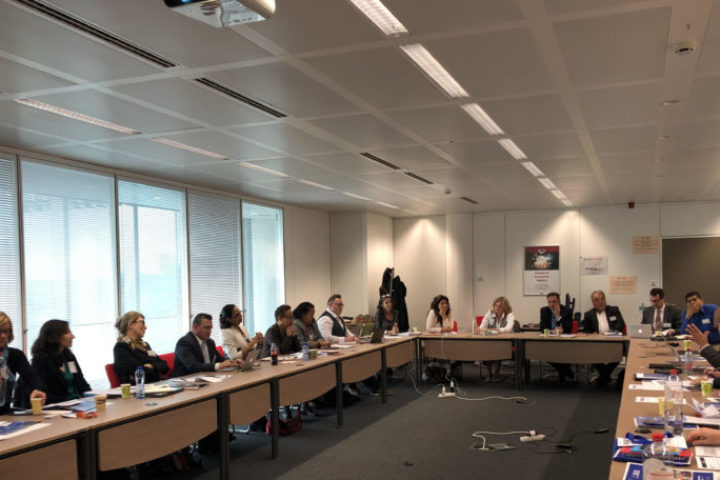
Kate Keohane
PhD candidate in the History of Art at the University of St Andrews
Museums have no borders,
they have a network
March 13, 2020
The word community means different things to different people. Initially it seems very positive, as if it refers to a group of happy neighbours. Very quickly, however, we realised the nuances of the term. In fact – as a number of museologists have elucidated in the past – communities do not have to be based in a shared locality. Nor is it necessary for them to have a total set of shared views. Rather, community, as evidenced both in the academic and practical work of the EU-LAC Museums project seems to rely upon the building of strategies for the sharing of differences.
Over the next few months, the EU-LAC Museums project will release a series of blog posts on what we have learnt about the concept of community through the themes of: Youth Empowerment, Technology, and Ecological Challenges.
With partners from Spain, Portugal, Scotland, the Caribbean, Costa Rica, Peru, Chile and France it was initially important to establish our collective priorities. Our early conversations focussed on definitions and limitations within each of our regions. We knew that a change needed to occur in both museological study and cultural policy in order to improve bi-regional collaboration, but it was difficult to agree on what this new model might look like. Our issues were made all the more complex due to difficulties in translation. Not only in terms of language, but also politically and institutionally. With partners working within the bounds of a number of disciplines in national museums, universities, schools and community-based museums, questions of scale and best methods for dissemination and discussion were critical to the success of the project. It quickly became apparent that in order to work successfully as a trans-national community, we had to initially zoom out to see what is shared: and that is a desire for inclusion and equality, and the development of initiatives for survival in the places in which we are living. Through open communication, the point of view then shifted to debates around what can be learned from eco-museums, community museums and other variations of local museums in locations around the world.
The tangible and intangible heritage data collected was significant, but represented only one aspect of the project’s impact. In line with debates happening within ICOM, the functions of museums themselves were challenged, not only as spaces for the preservation of objects, but also as environments for sharing concerns and reporting back on findings. As Karen Weil (Universidad Austral de Chile) reported: ‘We are not talking about places, buildings or infrastructures, we are talking about the people of today, yesterday and the future’. In order to enable this, cultural institutions need to listen and take positive action to respond to cultural shifts and changes. By co-creating in this way, dissemination (both remote/digital and present/physical) becomes critical. In acting as a consortium we created our own community with shared values and, in doing so, developed alternative models for working collectively that have a resonance within museum practice [as exemplified by the new ICOM Resolution on Museums, Community, Sustainability ]
One of the best examples of this that occurred during the course of the project was when we were invited to report our findings at an EU Policy Roundtable in Brussels. We sat together in a room to co-write a document that elaborated our findings, and the procedure of debating terminology and priorities in real time within a shared space brought increased cohesion to our approach. As we now come to the end of the four-year time-frame, we are discussing sustainability and the best way to take what we have learnt forward. Perhaps our main finding has been that community is about process: not an end result. Working through difficulty and experimenting with alternative forms of communication is what puts us, both in a local and a global sense, at the heart of museums.
Kate Keohane is a PhD candidate in the History of Art at the University of St Andrews. Funded by an EU Horizon2020 grant, her thesis, entitled ‘Some Otherwhere: Édouard Glissant and the Caribbean Landscape in Contemporary Art’, examines the uses of Glissant’s theoretical writing and ideas in the fields of art analysis and exhibition practice. Her research interests centre on alternative ways of figuring the relation between personal identity, place and visual culture.
